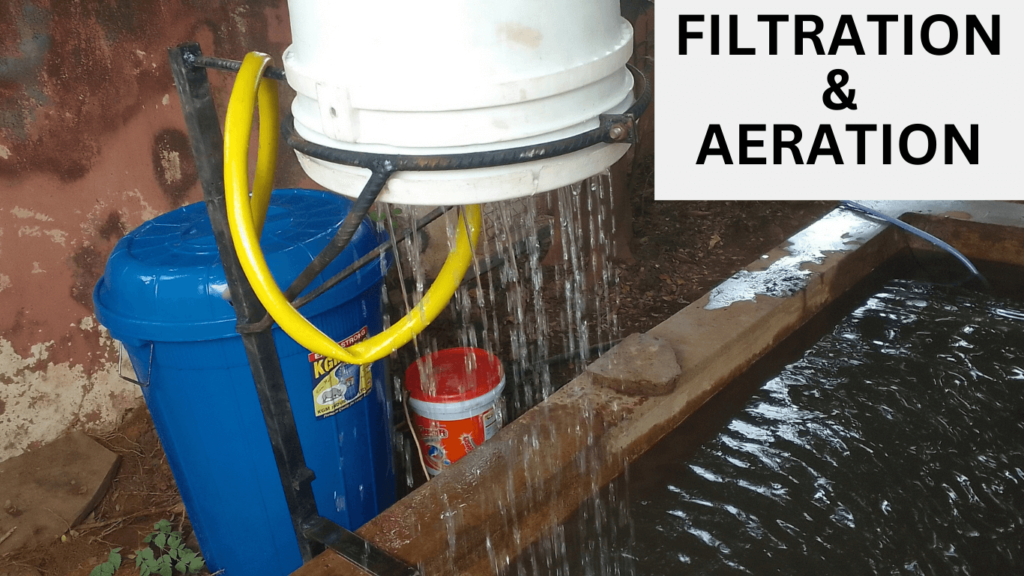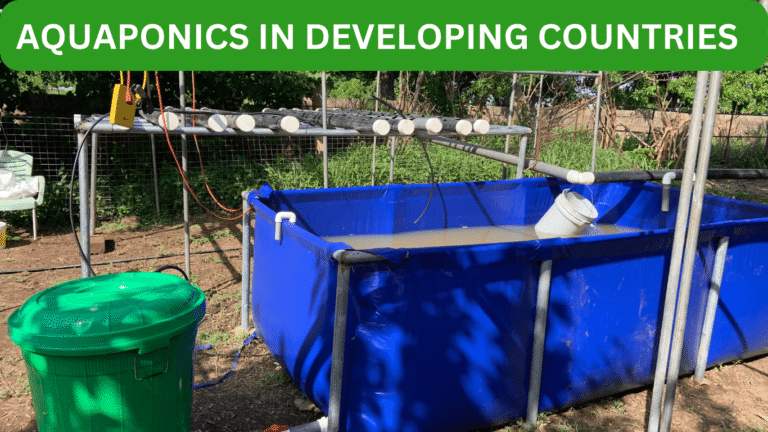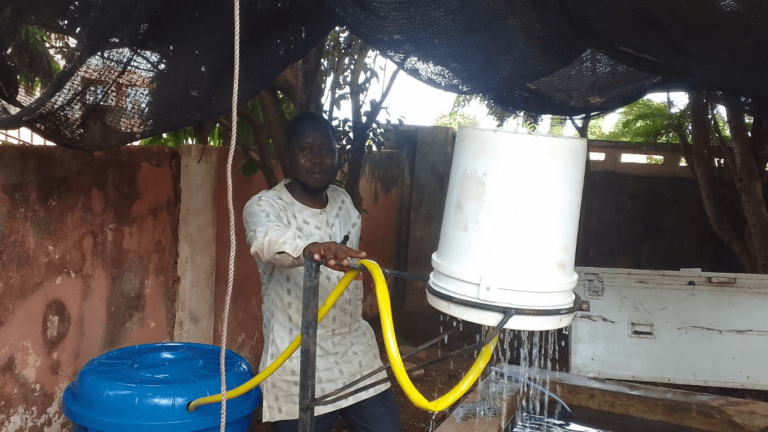Best times to change water in your fish pond is a must learn for the success of your fish farm maintaining a fish pond is more than just feeding your fish and hoping they the fish thrive. The water quality in your pond directly affects the fish health, growth, and overall productivity.
One of the most crucial aspects of fish farming is knowing when to change the water and when to leave it alone. Changing water at the right time keeps your fish healthy and prevents issues like diseases and poor growth. However, changing it at the wrong time can stress the fish and lead to unnecessary complications.
Let’s dive deep into the best times to change water in your fish pond, when not to change it, and why each situation matters.
Best Times to Change Water in a Fish Pond
As it’s important to always maintain the water quality in your pond, there are certain factors to look up to when changing the water. A lot of fish farmers who are beginners often ask, “how many days should I change the water in my pond?” I always answer them that there is no number of days to change the water. It could be within two days, three days, a week, a month depending on several factors such as stocking density, feeding, and others.
So the best times to change water in your fish pond is to observe the following characteristics in your water
1. When Water Quality Deteriorates
If your pond water starts looking murky, smells bad, or tests indicate high levels of ammonia, nitrites, or nitrates, it is time to change the water. Poor water quality is one of the most common reasons for fish stress and disease outbreaks. Over time, uneaten feed, fish waste, and decaying organic matter accumulate in the water, releasing toxic compounds that can harm your fish.
Changing the water in such situations helps remove these harmful substances and restore balance in the pond’s ecosystem. If left unchecked, poor water quality can lead to suffocation, stress-related illnesses, and even fish death. Regular monitoring of water parameters will help you determine the right time for a water change.
2. After Heavy Feeding or Overfeeding
If you’ve been feeding your fish heavily, especially with floating pellets or live feed, uneaten food can sink to the bottom and decompose. This leads to poor water quality, increased ammonia levels, and reduced oxygen. Fish may struggle to breathe, become lethargic, or show signs of distress.
Overfeeding not only wastes money but also disrupts the balance of the pond. If you suspect overfeeding has caused water issues, a partial water change can help dilute the excess waste and prevent further problems. At the same time, adjusting feeding habits will ensure better water quality in the long run. If we say partial water change, it means draining about half or more than half of the water in the pond and top it up with fresh water.
After overfeeding is one of the best times to change water in your fish pond. So take note of this.
3. During Prolonged Dry Seasons or Drought
Dry seasons bring about significant water loss due to evaporation. As the water level decreases, the concentration of waste and harmful chemicals increases. The reduced water volume also limits the amount of oxygen available to the fish, making the fish harder to survive.
In such periods, a well-timed water change can help replenish lost water and dilute harmful substances. However, it is essential to introduce the new water gradually to avoid shocking the fish with sudden temperature changes. In this instance, you might not need to drain the water especially if there is no contamination. After all, the level has reduced already. A simple topping up the water will do.
4. When the Water Becomes Cloudy or Has a Bad Odor
If your pond water suddenly becomes cloudy or develops a foul smell, it is a clear sign that the pond ecosystem is out of balance. This can happen due to excessive algae growth, bacterial blooms, or an accumulation of decomposing organic matter.
Changing part of the water can help clear out these unwanted elements and restore the pond’s natural balance. In addition, improving aeration and filtration will help prevent such issues from recurring. That is why you need to consider installing the Recirculating Aquaculture System (RAS) in your fish farm.
5. After Heavy Rainfall (If Water Becomes Polluted)
While rainwater itself is beneficial to fish ponds, heavy rains can bring in contaminants from surrounding areas. Pesticides, fertilizers, and other chemicals from nearby land can wash into the pond, altering the water chemistry. This is more common in earthen fish ponds. Or ponds installed lower to the ground.
If you notice drastic changes in pH level or signs of fish distress after a rainstorm, it is advisable to change part of the water. This helps flush out any harmful substances and restores stable conditions for the fish.
6. Before Introducing New Fish
When adding new fish to your pond, the last thing you want is for them to struggle in poor water conditions. If the water is already polluted or imbalanced, new fish may not acclimate well, leading to high mortality rates.
A partial water change before stocking new fish helps create a fresh and stable environment, making the transition easier. Additionally, ensuring proper acclimatization of the new fish will reduce stress and improve survival rates.
As new fish are transported or moved from a pond to another, they are already stressed and putting them in polluted water will stress them more and that can subject them to diseases. So putting new fish in fresh and good quality water is ideal and recommended.
7. When Algae Growth Becomes Excessive
Algae are a natural part of any pond ecosystem, and sometimes the fish even feed on it. But excessive growth of the algae can cause more harm than good. During the day, algae produce oxygen, but at night, they consume it, potentially leading to oxygen depletion. Additionally, some algae species release toxins that can be harmful to fish.
If algae are taking over your pond, a partial water change can help reduce their numbers. However, it is also essential to address the root cause by controlling nutrient levels and using aeration techniques. Again, the Recirculating Aquaculture System comes to play again.

When NOT to Change Water in a Fish Pond
As we mentioned above, water quality plays a significant role in the water quality management of your fish farm. And no fish will survive or perform well in a dirty water or water without proper parameters. However, there are certain times that leaving the water in the pond unchanged is better than changing it. We shall explore those moments that is not ideal or best times to change water in your fish pond
1. During Sudden Weather Changes (Cold or Hot Spells)
Fish are highly sensitive to temperature changes. If you change the water during extreme cold or hot weather, you risk exposing them to sudden temperature shocks, which can weaken their immune system or even cause death.
Instead, wait for stable weather conditions before making any water changes. If necessary, introduce new water gradually to minimize stress.
2. Immediately After Medication or Treatment
If you have recently medicated your pond to treat fish diseases, avoid changing the water too soon. Medications need time to take effect, and a premature water change can dilute or remove the treatment before it has a chance to work. The medication can be a natural remedy like bitter leaves application or it can be a chemical one. Whichever one, make sure it takes time after diluting in pond to enter the fish bodies well before changing the water.
Unless water conditions become dangerously poor, it is best to wait until the recommended treatment period is over before performing a water change.
3. During Spawning or Breeding Season
Spawning fish require stable water conditions to successfully reproduce. Changing the water during this period can disturb the breeding process and cause fish to abandon their eggs.
If you must change the water, do so gradually and only if absolutely necessary. Otherwise, wait until the spawning period is over before making any adjustments.
4. If Fish Are Already Stressed or Sick
Sick or stressed fish are more vulnerable to changes in their environment. If your fish are already weak, introducing new water with different parameters may further stress them and worsen their condition.
In such cases, it is better to improve aeration and filtration rather than performing an immediate water change. Only change the water if tests show toxic levels of ammonia, nitrites, or other harmful compounds.
5. If Water Parameters Are Stable
If your water tests show that ammonia, nitrite, nitrate, and pH levels are within safe limits, there is no need for a water change. Unnecessary changes can disrupt the beneficial bacteria that help maintain water quality and create unnecessary stress for the fish. To determine that is to have the right water test kit.
Instead of frequent unnecessary water changes, focus on proper filtration, aeration, and feeding habits to maintain stable conditions.
6. During Peak Sunlight Hours (Hot Afternoon)
Water changes should be done early in the morning or late in the evening when temperatures are more stable. Changing water during the hottest part of the day can cause rapid temperature shifts, which can shock the fish and cause unnecessary stress.
Best Practices for Water Changes
- Perform Partial Water Changes: Instead of draining the entire pond, change only 10-30% of the water at a time to prevent shocking the fish.
- Use Aged or Dechlorinated Water: If using tap water, let it sit for 24 hours or treat it to remove chlorine before adding it to the pond.
- Check Water Parameters Regularly: Monitor pH, ammonia, nitrites, and nitrates before and after water changes to ensure stability.
- Introduce New Water Gradually: Slowly introduce new water to avoid sudden changes in temperature and chemistry.
Conclusion
Knowing the best times to change water in your fish pond and when not to change the water in your fish pond is critical for maintaining a healthy environment. We’ve explored 7 best times to change water in your fish pond and 6 times not to change the water in your pond.
By understanding the signs of poor water quality and following best practices, you can ensure your fish thrive without unnecessary stress. The key to successful fish farming is balance—making the right decisions at the right time.




